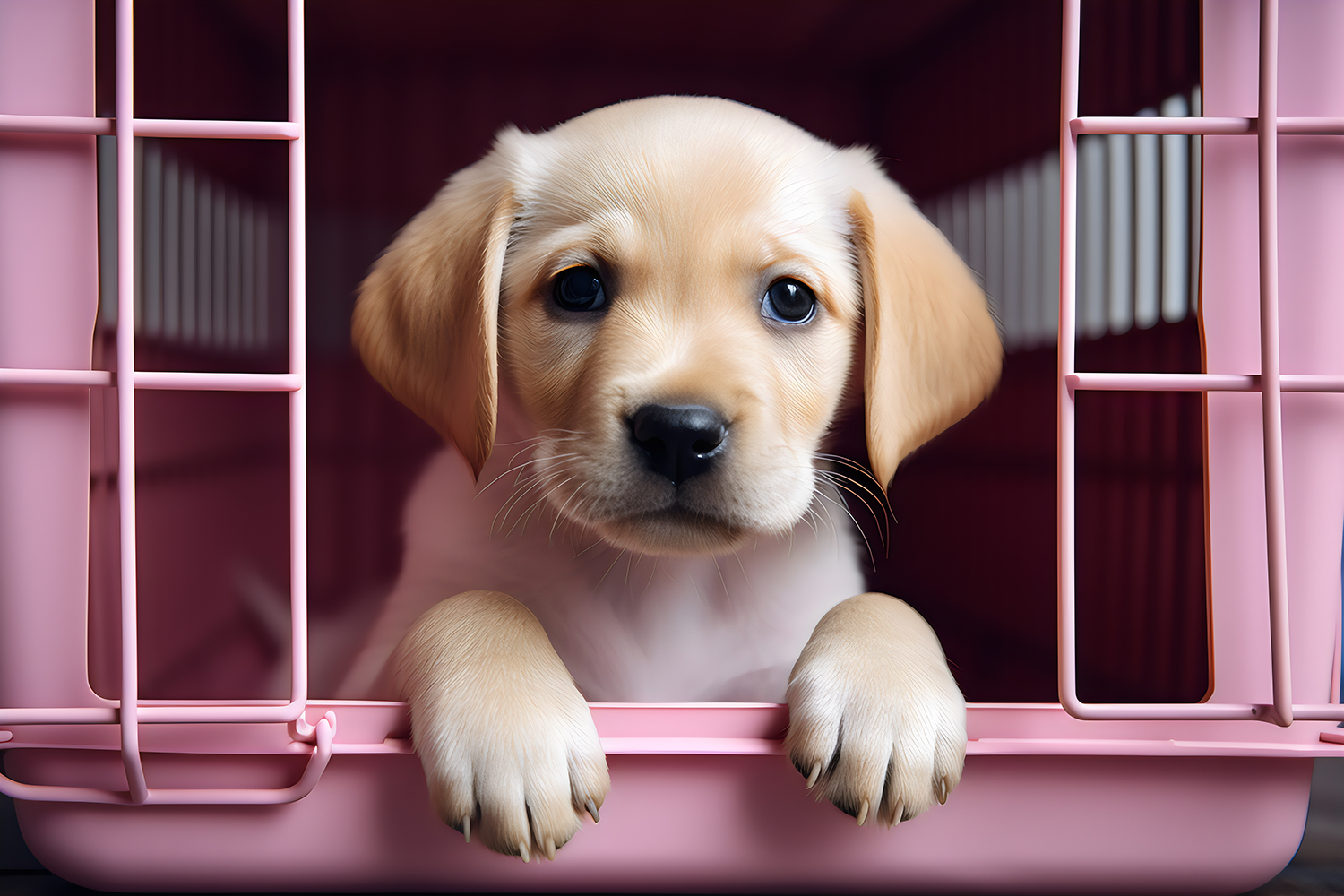A Short Guide To Crate Training Your Dog
If you decide to crate train your dog, it can be a challenging process. Check out our short guide to crate training, we have some great practical tips.

Bringing home a new dog is always an exciting adventure. You get to experience their firsts and create a special bond that withstands years.
However, with any new dog, there’s an immense amount of training that has to occur. One common training practice is crate training. While controversial, its principles help designate a safe space where your pet can rest and relax.
There is no easy way to begin crate training, although if you follow these dos and don’ts, you’ll be on the path to success.
Do Make the Crate a Positive Space
If you want your dog to enjoy their crate, you’ll need to include some of your dog’s favorite items. For instance, you may want to include a plush dog bed, some blankets, and a few toys.
You can even add an item of your clothing to their crate. Your scent may help calm your dog when he or she feels lonely or anxious. However, try not to put too much in the crate, as it could leave little room for your dog to move and get comfortable.
Once the crate is ready, it’s time to start creating positive experiences for your pet. You can hide treats in the blankets for your dog to find. You can throw your dog’s favorite ball inside the crate to get him or her used to going inside. Another common technique is placing their food bowl inside the crate to help your dog associate it with food and rewards.
Don’t Force Your Dog into the Crate
Never force your dog into their crate; doing so may lead them to associate the crate with being scared. Instead, try to entice them to go by leaving the crate door open that way they can explore the space on their own.
You can also try going inside the crate if you can fit. If you can’t fit in the crate, try placing your hand inside the crate. Demonstrating that the crate is safe may help entice your dog to go in.
Although, depending on how long you’ve been crate training, this process can take some time. Try not to get frustrated with your dog; if you get stressed, your pet will notice and may become even more scared.
Be patient and stay positive; keep your tone upbeat and cheery to show your pet that the crate is safe. Once your dog willingly walks into the crate, reward your dog with treats. Rewarding your dog will help create a positive association with the crate and quicken the process.
Do Take Your Dog Out Routinely
Whether you are crate training at night or during the day, check in with your pup after several hours. Puppies that haven’t learned bladder control should be taken out every two to three hours. Dogs that are a year or older should be taken out every four to five hours.
If you keep your dog in the crate without any way to relieve themselves, they may have an accident after a few hours. Since dogs don’t like sleeping next to or around their body fluids, they might start associating the crate with discomfort.
As a result, take your pup out regularly to ensure crate training is comfortable and enjoyable for your dog. Not only does it prevent accidents, but it provides a break from training.
Don’t Let Your Dog Out Too Often
There’s a difference between letting your dog out to go outside and letting your dog out simply because they’re whining. If you let your dog out after they start whining, the dog will learn that all they have to do is whimper or bark, and they’ll be let out of the crate.
It’s important to resist the urge to comfort them during training. Once your dog realizes their whines won’t get your attention, they’ll start to relax.
However, if your dog doesn’t relax after thirty minutes of being in the crate, this can mean that your dog is stressed. Dogs can get stressed when they haven’t fully adapted to their crate.
In this case, it’s important to tend to your dog to avoid creating negative associations with the crate. Start by petting and praising your dog while he or she is in the crate.
Once your dog is calm, give him or her a reward, then take your dog out of the crate. This step is crucial as it demonstrates whining does not equal being let out. Instead, it rewards the calm behavior, which makes your dog more likely to repeat it in the future.
Do Exercise Your Dog Before Crate Time
There’s a little secret to ensuring your pet winds down in their crate, and that’s exercise. Exercising your pet’s body and mind will tire them out, making them they’ll settle down faster in the crate. You can take your dog on an extra long walk, play fetch with them, or use puzzle games to stimulate their mind.
Using one or all of these techniques will help tire out your pup, making crate training easier. Plus, it will teach your dog to associate their crate as a place to relax after a period of play.
If you routinely exercise your pet, start to transition them to their crate afterward; over time, it will become a natural routine for your pet. This routine may even encourage your pet to use the crate on their own when they want to lounge around or be alone.
Don’t Use the Crate as Punishment
Never use the crate as a form of punishment; if you do, your dog will associate being disciplined with the crate. This might cause your dog to become fearful of the crate.
You want the crate to be a safe and relaxing environment for your dog. If you punish them with crate time, the crate will never be a place they feel relaxed and secure in. Whether you’re just beginning crate training or are nearing the end of the process, ensure the crate is always associated with positive things like treats, toys, and relaxation.
Start Crate Training Today
Crate training is truly a trial-and-error process. Sometimes, a strategy will work one day; other times, it may fail. No matter how long the process takes, be patient with your pet and have a positive attitude.
There will be days that your dog regresses, and that’s okay. Meet your dog where he or she feels most comfortable, and then work from there. Remember, your pet is adapting to a new and unfamiliar space, so make the experience fun.
Let us know in the comments below if any of the do’s or don’ts surprised you. Plus, if you have any crate training stories, helpful tips, or additional do’s and don’ts, let us know!


